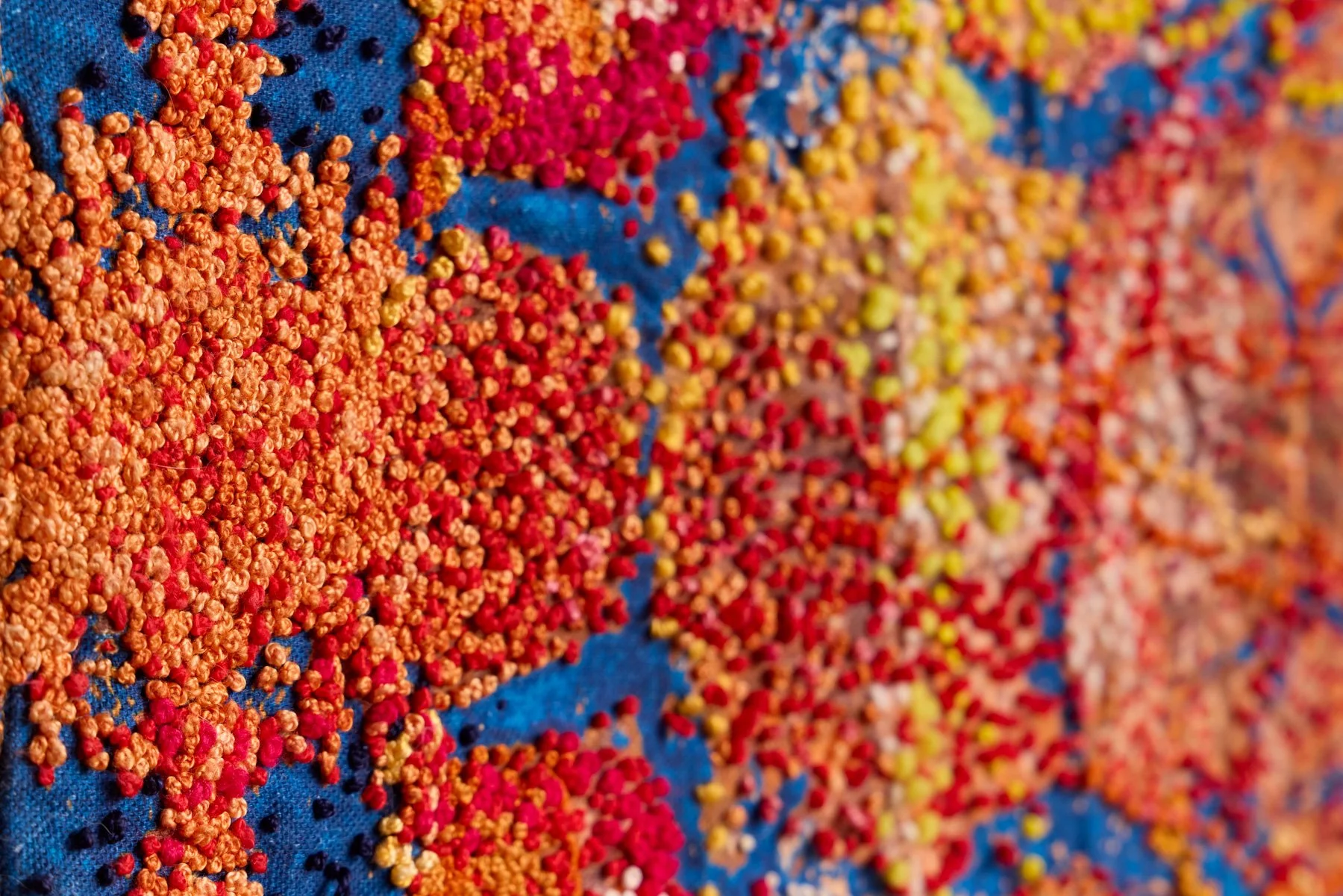Jo Mellor's art practice emerged from her experiences in the mining town of Broken Hill in far West NSW, Australia. At the time, she was undertaking her BFA Honours year at UNSW Art Design and Architecture. The exposure to a wide, open, arid landscape littered with industrial and mechanical mining detritus triggered within her a yearning to investigate the minute detail of the rust patterns on these discarded objects. Once utilised for extensive hard labour, the machines had now become useless in terms of their functionality. They were decomposing and becoming one with Country. She found intricate beauty in the natural patterns left on their weathered exteriors. She chose a multimedia approach to create textile artworks that gave further depth to the fragile rust patterns that were digitally imprinted onto sustainable linen and cotton fabric. By incorporating the conventionally ‘domestic’ element of hand-stitching and embroidery, the artist sought to create a cross-cultural work which has universal presence. This methodology intertwined the domestic and the industrial, exhibiting an intertwined connection between the construction and deconstruction of disintegrating anthropocentric mine sites in the Broken Hill area. From her unique standpoint as a mother with a cross-cultural background from Sydney, she wished to explore how the Australian interior landscape has been engaged with and irrevocably altered by industry.
Two years later, the artist traveled 110km East from Broken Hill and began to examine her connections with the Menindee Lakes and the Darling River as part of her Master of Fine Arts (research) project. She was motivated to understand the environmental crisis evident in the area as a result of drought and the mismanagement of water by government bodies and corporations who have failed, and continue to fail, to collaborate and consult with Aboriginal groups. The interactions throughout the research project occurred with Ngiyampaa and Barkandji women regarding ecological concerns leading to the demise of their water systems.
The project was guided by Aboriginal knowledge provided by Aunty Beryl Carmichael and employs the methodologies of yarning and deep listening applied to an expanded textile practice. Yarning and deep listening informed a productive and cooperative, respect-based relationship, contextualised through an ecofeminist approach with the aim of alerting others to the extent of ecological issues. Jo drew from the framework of a socially engaged practice, which involved female artist participants from Sydney assisting her with the project that included the creation of a textile tree installation, participation in a community protest using hand sewn and embroidered textile protest banners that she created for the event, support with preparing an exhibition for the Menindee community and a documentary film about the project.
The research project raises awareness through art and eco-activism, highlighting environmental and spiritual losses on the Menindee Lakes and the Darling River. Jo’s respect and acknowledgement of Aboriginal people as custodians of Country provides an opportunity to see how ecosystems are resilient when cared for under these multi-generational knowledge systems.
